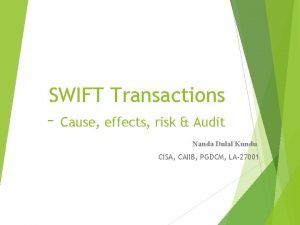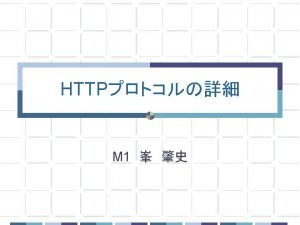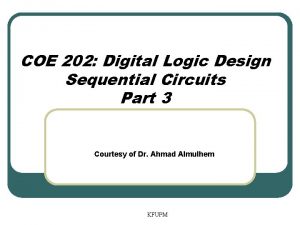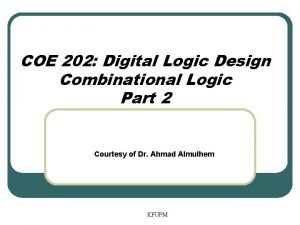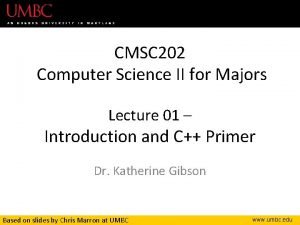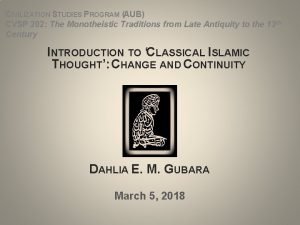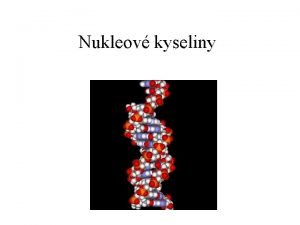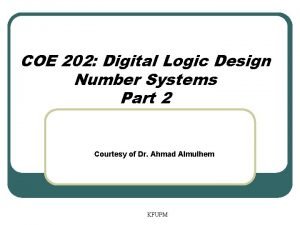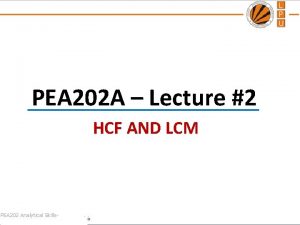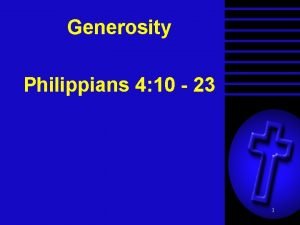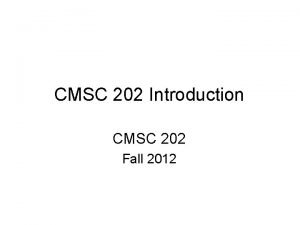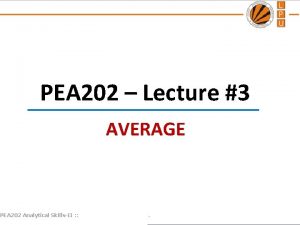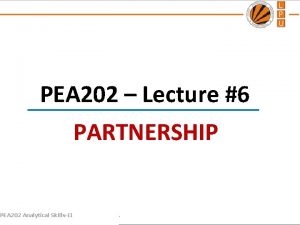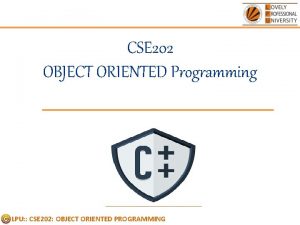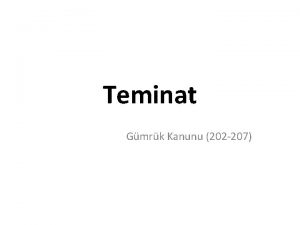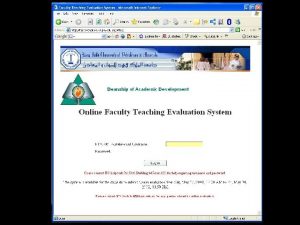MS 202 Generosity Class 2 David is the














![Ministry Funding § Review and benchmark: § 1% [8%-14%] § 20% [57%-63%] § 50% Ministry Funding § Review and benchmark: § 1% [8%-14%] § 20% [57%-63%] § 50%](https://slidetodoc.com/presentation_image/bf7d0f62c37165b08d5431d8993d53d0/image-15.jpg)





![New Donor KPMs § Gift Band 1 [$1 -$200] § Are you increasing or New Donor KPMs § Gift Band 1 [$1 -$200] § Are you increasing or](https://slidetodoc.com/presentation_image/bf7d0f62c37165b08d5431d8993d53d0/image-21.jpg)












- Slides: 33

MS 202 Generosity Class 2

David is the President and CEO of Mortar. Stone, a privatelyowned Christian data analysis company headquartered in Reno, Nevada, with employees in Chicago, Seattle, and Pittsburgh. Mortar. Stone provides both standard and customized data analysis for the church, both nationally and internationally. The company works with over 600 churches, two million plus donors and is tracking giving to Kingdom causes in excess of $4 billion. David and his leadership team work with some of the largest and fastest growing churches in America. His passion is to help church leadership have objective insights in order to be more efficient with the resources that have been entrusted to them. David Thoroughman

It is imperative to understand the foundation of why data is important and what metrics church leaders should utilize. This class will examine the church giving metrics in the internal effectiveness of period over period growth and external benchmarks of peer churches grouped by annual budget. The result is a comprehensive analysis that is used to identify ministry strengths and areas that can be improved. Class 2—Key Performance Metrics

KPMs – What do you measure and why? Common metrics most churches measure § § § Weekend Attendance Giving [weekly, Monthly, Yearly] Giving per Capita Baptisms Small Groups and Small Group Attendance

Common KPMs § Communicated to the body in a celebratory fashion § They are the “report card” for the ministry NOTE… § KPMs that are ‘corporate or macro’ should be developed at an individual or micro level to guide leadership • Giving: • Weekly • Monthly • Yearly • Giving / Capita

KPMs help answer the question…. How did we get here? § The church will focus [and celebrate] the corporate [macro] goal § Leadership should develop individual [micro] metrics to accompany the corporate [macro] metrics to ensure the goal is achieved § Moving Vision to Reality

Generosity Metrics § Don’t fall into a false sense of success when measuring annual giving and giving per capita - both are up, great, but lets dig deeper! § Establish additional metrics that are more actionable

Foundational Concepts 1. Segment donors into Giving Units 2. Segment Giving Units into Gift bands 3. Measure giving +/ -across segments and various reports

Giving Units vs. Donor Units § Giving Unit KPMs § A Giving Unit is a donor that meets a minimum giving threshold [e. g. $200. 00 GF giving / year] § 97 -99% of total giving on average comes from Giving Units § The average church 50 -75% of donors are Giving units. § By the numbers…. . AWA = 100 [50 are donors, 25 -30 are GU] § Simply put – 25 -30 people out of 100 keep the lights on!

Giving Units vs. Donor Units § GU = $200 § GU Giving = 99% of total Giving § GU total = 626 of 1165 [54% of tot. ] § GU = $3, 900 in annual giving

Going Wide-DU vs. Deep-GU § By default, church measures success by going ‘wide’ by measuring weekend attendance and annual giving. § If growing generous disciples is a goal, then should we consider a ‘deep’ strategy as well? And if so, what external behavior [KPMs] should be present as someone grows in their faith? Example… § Giving increasing § Volunteering increasing § e. g. 1% inc. = ‘x’ fin. gain

Gift Bands § Gift Banding is the segmenting of Giving Units in order to study giving trends across various giver segments § Gift Band 1 [$1 -$200] § Gift Band 2 [$200 -$1, 000] § Gift Band 3 [$1001 - $5, 000] § Gift Band 4 [$5, 001 - $10, 000] § Gift Band 5 [$10, 000+] Note: Gift Band 1 only measured for first time givers

Gift Bands § Gift bands are a feeder system limited by donor capacity § A divergent pattern represents a ‘hole’ in your stewardship strategy

Ministry Funding § How dependent is the ministry on your financial leaders and what does that suggest? § Strategy – § Examine your funding dependency [top 1%, 10%, etc. . ] § How does your growth look Yo. Y internally? § How do you compare to your peers externally?
![Ministry Funding Review and benchmark 1 814 20 5763 50 Ministry Funding § Review and benchmark: § 1% [8%-14%] § 20% [57%-63%] § 50%](https://slidetodoc.com/presentation_image/bf7d0f62c37165b08d5431d8993d53d0/image-15.jpg)
Ministry Funding § Review and benchmark: § 1% [8%-14%] § 20% [57%-63%] § 50% [87%-93%] § Is giving growth broad based or dependent on top 1%?

KPMs for New Givers § What is your New Giver strategy? New Givers Giving Base Lapsed Givers

Moving visitors to givers First time visitor and donor strategy Visitors First time giver Regular giver • What is your documented strategy? • Who is responsible for implementing it? • How do you define success?

Creating the foundation… Some things to consider… • Educate what it means to be a steward • Cast vision of where the church is headed • Create trust through transparency

New Giver Visitor Generous Giver Regular Giver Visitor Giver Progression

New Donor KPMs § How many new givers are you attracting? § Segment into gift bands § Know you retention rate [78 -80%] § Know your giving growth rate [150%+] § Next Steps… § Benchmark § Goal set § Monitor progress
![New Donor KPMs Gift Band 1 1 200 Are you increasing or New Donor KPMs § Gift Band 1 [$1 -$200] § Are you increasing or](https://slidetodoc.com/presentation_image/bf7d0f62c37165b08d5431d8993d53d0/image-21.jpg)
New Donor KPMs § Gift Band 1 [$1 -$200] § Are you increasing or decreasing Yo. Y § Retention Rate 31% § Giving Growth 87% of prior yr.

Closing the Back Door § Understanding the ‘At Risk’ component of the church New Givers Giving Base Lapsed Givers

Back Door § Every church has one, so who is on it? § Exit interviews ARE worth the time! § Back door stat’s by giving band § What category are you losing? Band 1 or Band 5 § What does it mean?

Back Door § Steady decline in ‘not losing donors giving between $5, 000 and $10, 000 annually

Back Door § Steady to slight increase of losing ‘lower’ capacity donors [$200 -$1, 000] § Attrition is normal in a growing church. § Know your % change across all gift bands

Donor Churn § Donor Churn is your efficiency ratio § Spending resources on attracting new donors is great, but if you are not assimilating them than its like throwing mud against the wall § Donor / Volunteer fatigue is real!!!

Donor Churn § Donor churn is the analysis of knowing the ratio of who you bring in as a giving unit and who stops or goes out the back door as a giving unit. § A healthy ratio is 1. 5 – 2 new donors to 1 out the back [2: 1]

Giving Unit Analysis § Benchmarks for Giving Units § GU unit retention – 80%-82% § GU giving growth – 120% § 50% - Increasing from Yo. Y § 25% - Stable [decreased giving no more than 20% of prior year] § 15% - Struggling [decreased giving by upto 50%] § 10% - Short [decreased giving by 50%+]

Giving Unit Giving Retention Benchmarks for Giving Units GU - unit retention – 80%-82% GU - giving growth – 120%

Giving Unit Giving Inc/Dec GU giving growth – 120% • 50% - Increasing from Yo. Y • 25% - Stable [decreased giving no more than 20% of prior year] GU giving growth – 120% • 15% - Struggling [decreased giving by up to 50%] • 10% - Short [decreased giving by 50%+]

Quick recap… § Back Door – who was giving that stopped? 1. They moved away 2. Financial / family hardship 3. Vision issue § Analyze who is on the back door [avoid false positives] § Know the back story

Quick recap… § Giving Unit – Yo. Y analysis § Giving Unit Retention – 80%-82% § Giving Unit Growth – 120%+ § Giving Band analysis within segments § What does it? § What do we do?

Closing Comments and Questions § This is part of the foundation of KPMs to start thinking about – LOTS MORE TO COME!!! § The free offer for a data review for those that have F 1, CCB or The City – we need you data connection by next week. It takes 5 minutes! § We will make every effort to coordinate a free review with a consultant within the next 2 -3 weeks § Those that are not API compliant – email me for other options
 Confucianism origin
Confucianism origin Generosity network
Generosity network Types of generosity
Types of generosity Generosity quiz
Generosity quiz Deficiency of generosity
Deficiency of generosity Bp form 202-a
Bp form 202-a Grinding
Grinding Ta 202
Ta 202 Swift category 7
Swift category 7 Linia kolejowa 202
Linia kolejowa 202 Mt 202
Mt 202 202 accepted
202 accepted Sfu iat
Sfu iat Cve 202
Cve 202 Coe 202 kfupm
Coe 202 kfupm Coe 202
Coe 202 Coe 202
Coe 202 Umbc cmsc 202
Umbc cmsc 202 Xxxxxxx.com
Xxxxxxx.com Cvsp 202 aub
Cvsp 202 aub Ashrae standard 202
Ashrae standard 202 B d ribofuranosa
B d ribofuranosa Cse 202
Cse 202 Cse 202
Cse 202 Cpcs 202
Cpcs 202 Coe 202
Coe 202 Coe 202
Coe 202 Coe 202 kfupm
Coe 202 kfupm 05/11/202
05/11/202 Cs 202
Cs 202 Contilube 2
Contilube 2 Lcm of 404 and 96
Lcm of 404 and 96 Mt manager inventia download
Mt manager inventia download 202
202








